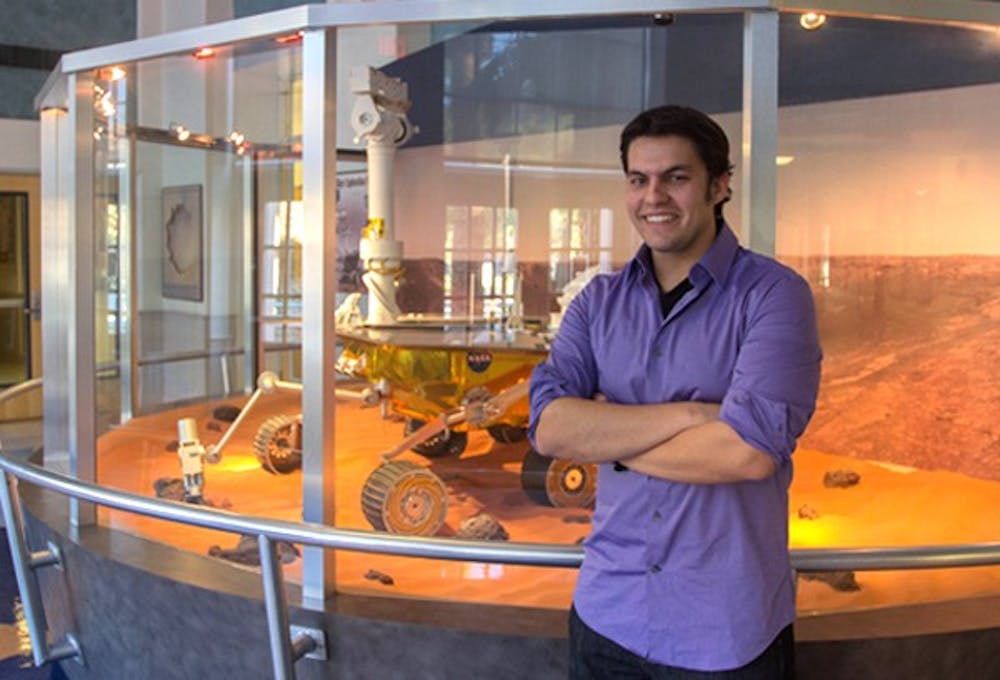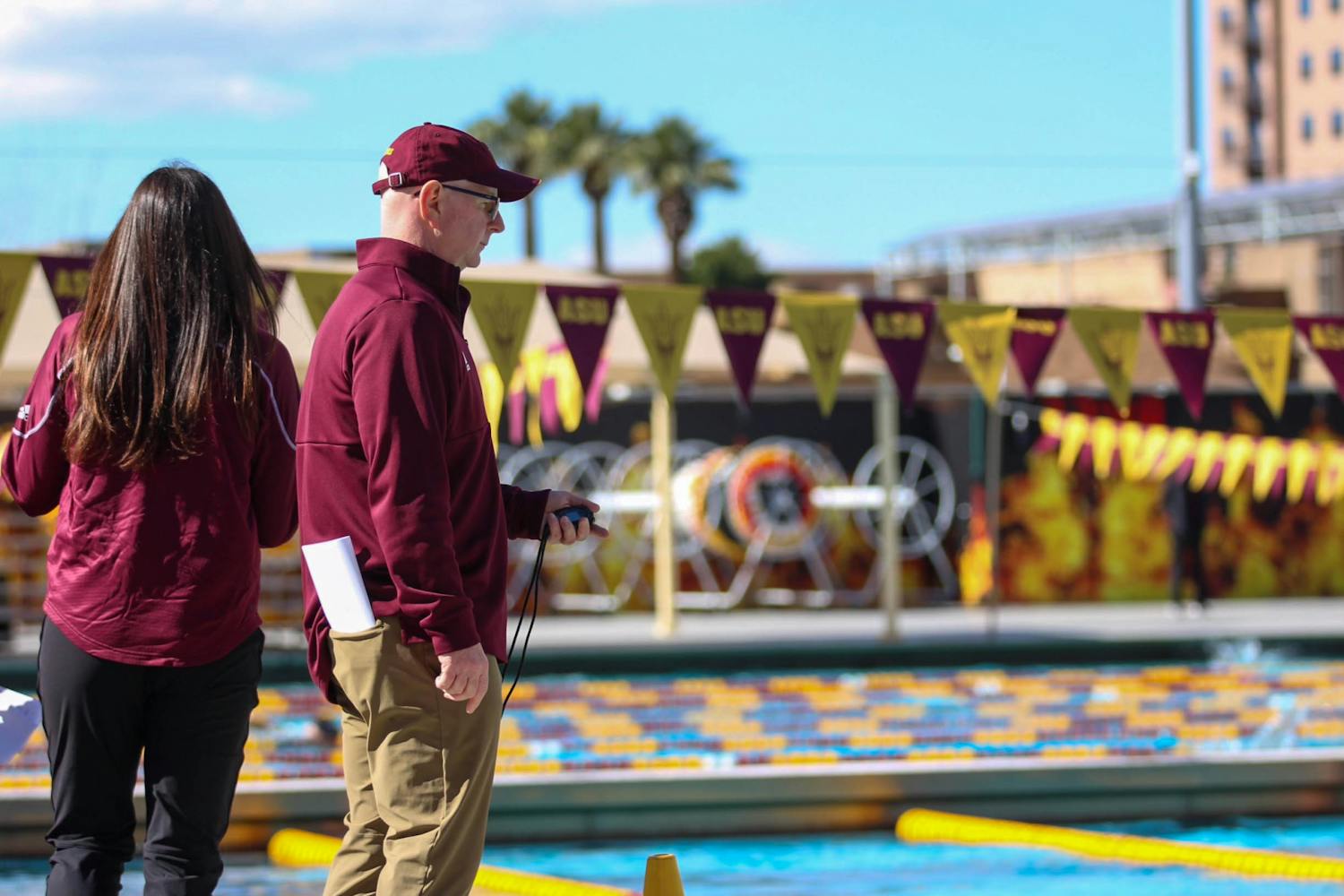 Graduate student Michael Veto is working to build a camera that has capabilities of being attached to spacecraft for research in the near future. (Photo by Dominic Valente)
Graduate student Michael Veto is working to build a camera that has capabilities of being attached to spacecraft for research in the near future. (Photo by Dominic Valente)Geological sciences graduate student Michael Veto will design an infrared camera that will be integrated with a spacecraft conducting proximity operations in space.
This satellite will orbit around the Earth before ejecting a smaller satellite known as a cubesat. The camera will use the infrared technology to photograph the cubesat and determine its location.
Infrared was essential for the project, because it does not need any type of illumination to be visible. Instead, it uses radiation to perceive the objects.
Veto said the infrared camera will look at light at an 8-to-12 micrometer range.
“Within that wavelength range, basically we’re looking at heat that is being radiated from different objects,” Veto said.
The camera will capture images of the cubesat’s radiation to determine its proximity to the satellite.
“Once we determine how far away the cubesat is, then we’re able to rendezvous with it and conduct the proximity operations,” Veto said.
The images will determine how close objects are to one another and their relative velocities.
This input will then be used to guide the spacecraft in relation to objects being tracked by the camera, Veto said.
“It’s almost like we’re chasing this other one, but we can’t do it blind," Veto said. "We have to have some eyes in order to find it. That’s what the camera is for."
Planetary geology graduate student Becky Smith said Veto is very enthusiastic and is putting in a lot of time into the project.
“He’s always over in the lab working on it,” Smith said.
Veto is being guided by his adviser, geological sciences professor Philip Christensen. Veto, Christensen and other ASU engineers have worked on the project for more than four years, and it was selected as the winner of the University Nanosat Program competition.
The UNP obtains submissions from the country’s universities in which students physically and orally present their hardware. The competition is funded by the Air Force Office of Scientific Research and the Air Force Research Laboratory.
The Air Force’s selection is mainly based on military relevance, status of the hardware and documentation that supports the project, Veto said.
Software engineer programmer Dale Noss said he was really pleased that Veto won the competition.
“He was always doing something, doodling around, sawing on something, bolting it together," Noss said. "This was just another thing among other things he was doing."
The entire Prox-1 satellite project, which is being built at Georgia Tech, must be fully integrated and delivered to the Air Force within the next 18 months, and Veto will have approximately eight to 10 months to finish building the camera at the Tempe campus.
Reach the reporter at jcsolis@asu.edu or follow her on Twitter @jackiecsolis




